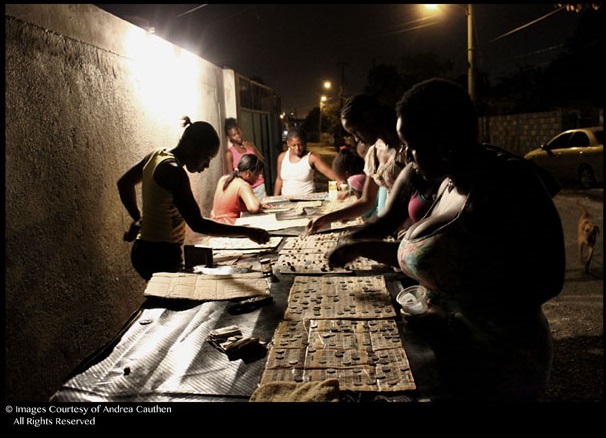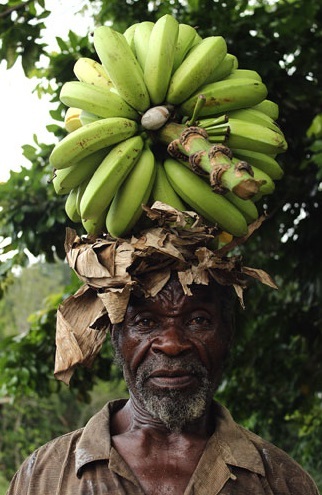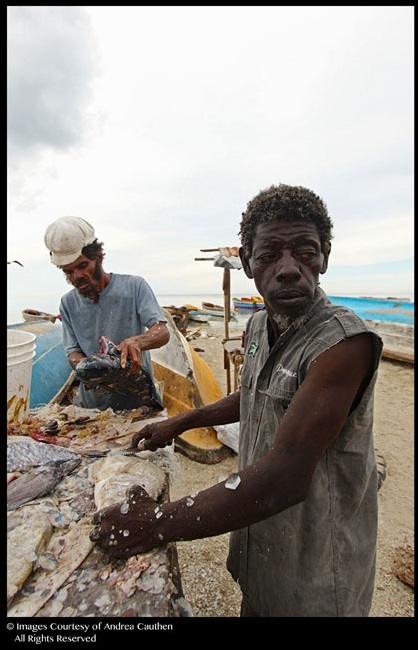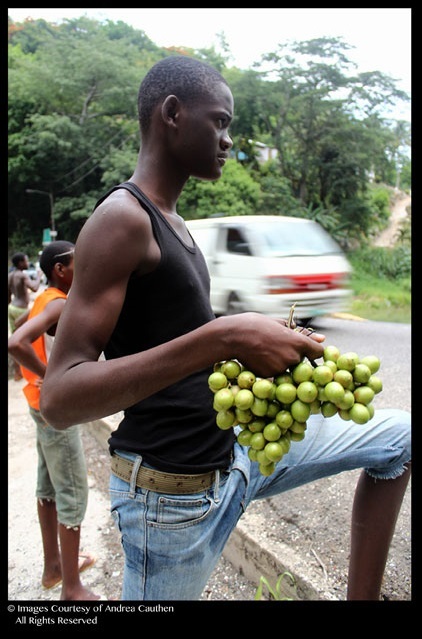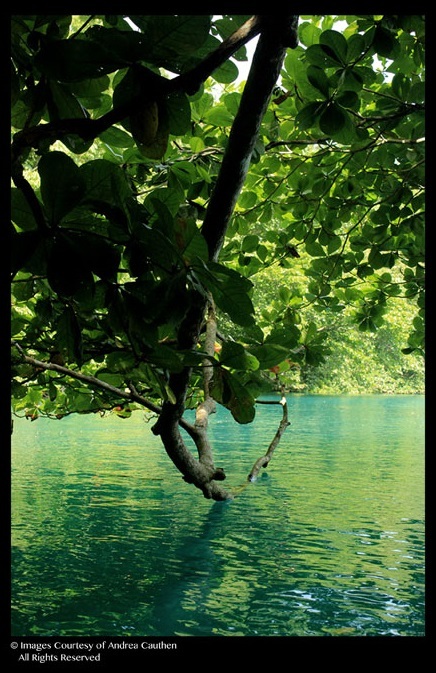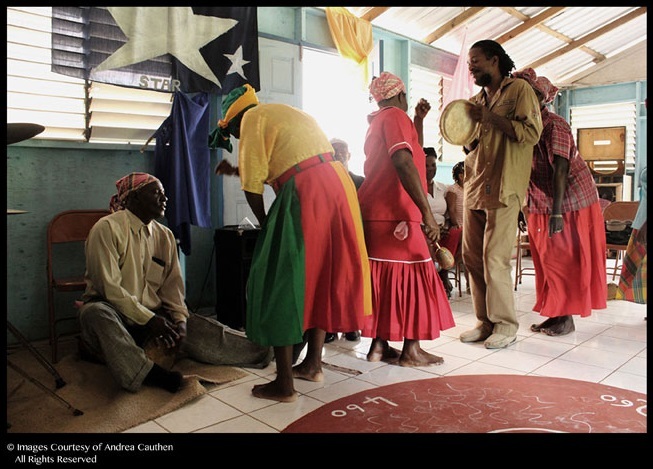
This week we have a conversation with Jamaican-American Multi-Media Artist and Photographer , Andrea Cauthen. As a photographer Andrea’s goal is to capture images in the hopes of communicating the realities of our ever changing world. Her approach is to always photograph with honesty and integrity respecting the image in front of the lens. Andrea is currently develop-ing a body of work studying religious practices in Jamaica and recently returned from the border town of Nogales, Mexico and Nogales, Arizona where she documented the migrant experience surrounding the illegal immigration crisis in the United States. Publications of her work include NationalGeographic.com, Reggae France, ARC Magazine, Africanah, Bloomberg Business Week, The Chronicle of Philanthropy, And Then, Matador Network and Specter Magazine. Here is our conversation with Andrea Cauthen.
Please tell us something about yourself; what is your connection to Jamaica?
I am a visual artist and photographer based in beautiful Brooklyn, NY which I jokingly refer to as “Kingston Part II.” My neighborhood is a mecca of colors, textures, culture and life; a wonderful blend of the African Diaspora with the majority of residents being 1st and 2nd generation Caribbean immigrants. My connection to Jamaica is my mother’s side of the family. She is originally from the parish of Clarendon.
When you were growing up what did you want to be?
I wanted to enter the visual arts as my father, is an artist. He started as a draftsman in the Vietnam War; his ability is incredible! I studied Studio Art at Spelman College in Atlanta, GA and from there became focused on my love of fashion so after graduation, I migrated to New York where I studied Fashion Design at Parsons School of Design which then led me to working in the fashion industry.
Do you remember when you realized that you wanted to be an artist/photographer? How did you become aware of your ambition?
Well, studying art at Spelman and having a supportive staff helped me stay focused and although the majority of my 9-5 career has been working the fashion industry as a color and print designer, I always tried to maintain a foot in the visual arts by developing bodies of work that I would submit to exhibitions. Photography actually came to me about three years ago as I started to travel more within and out of the country. I began to use the camera as another way of storytelling.
Tell us about your recent exhibition?
In 2006, I realized that I needed to start visiting Jamaica again as many of my elders were passing on and I felt that as part of the younger generation, it was important for me to stay connected to the island. “Roots and Culture: Jamaica” is a culmination of my travels back and forth. I was attempting to dispel the Caribbean stereotype of “beaches, sand, sea…all “irie vibes.” I wanted to show that you can find the extraordinary in the everyday lives of the people living there.
You visited Jamaica for that exhibition. Tell us about that experience?
I have been visiting Jamaica for as long as I can remember. I would stay sometimes in the summer with relatives and it was always something so exciting about the place. As I went through high school and college, it became more of a challenge to visit as regularly so I had to make that decision as an adult to return and get reacquainted especially after my grandfather passed away in 2007. When I travel to Jamaica, The experience is found in the people, who are the backbone to the survival of the country. I enjoy learning and getting to know the people of Jamaica as that helps me to know myself.
Was it your first time going to Jamaica specifically for a photo shoot?
I always had my camera in tow on my visits there, however after picking up photography about 3 years ago, I began to “see” Jamaica differently in terms of what I wished to communicate to people through my photos.
Were people receptive to having you take their photos?
For the most part, yes. There will always be people that don’t like having their picture taken which I can understand because I am one of them. (You won’t find too many “selfies” of me….I am a bit bashful.) The important thing that I am learning about photography is that the actual photo is only 10% of the equation. Photography is another form of communication so I try to communicate what I see with integrity which is a challenge now in a world where everyone has a camera phone and are all too eager to share images without even meditating on what the image is trying to convey.
What was the inspiration for the photos you selected for the exhibition?
I wanted to evoke a sense of place and belonging by choosing photos that celebrate many of the scenes and traditions that are rapidly disappearing not only in Jamaica, but throughout the Caribbean. As society becomes more and more “modern” we are in danger of disconnecting the root from the tree. My late grandmother who grew up selling fish in Rocky Point, Clarendon always used to joke with us and say “Respect the root, I am the root.” I now understand what she meant. Yes, growth and expansion are inevitable, but should not happen at the expense of the “root.” This is what led me to choose “Banana Man” as the main photo to advertise the exhibition.
Tell us about “the banana man” photo? How did you make this capture? Where in Jamaica was it? Set the scene for us?
Oh my sweet “Banana Man.” “Banana Man” is actually Bojo, an elder from the Ginger Ridge community of St. Catherine. He is married to my friend’s grandmother who we were visiting that day. Bojo primarily makes his living selling the sweetest, ripest, greenest bananas that I have ever seen. He approached me, attempting to sell me a bunch but I offered him payment for a photo instead. There was something about him; he had a sense of pride and humility that is hard to find today and he walked through Ginger Ridge with that load of bananas as though it was as light as a stick of cotton candy. The beauty of Jamaica comes from people like Bojo who’s power is the ability to recognize and sustain culture which is tantamount to any society.
What stimulates your imagination best?
Indulging the senses while paying attention.
How do you define art?
Art is life. One can’t exist with out the other.
Was Jamaica what you imagined it would be?
Imagination can sometimes be dangerous as it leads to fantasizing situations that simply do not exist. This is a trait that many people succumb to when visiting the Caribbean, Jamaica in particular. Yes, Jamaica can be a glorious, sensual, paradise but the reality is that it is also a country challenged by a growing culture of violence, corruption, poverty and the loss of control of it’s natural resources. The question is less about the imagined, but more about what is present now and what can be done to fix it.
Tell us about the other projects you are working on? Do you have more Jamaican projects?
I am currently working to make “Roots and Culture: Jamaica” part of a traveling exhibition with possible future shows throughout North America and Europe. I am also developing a body of work from my recent trip to Nogales, Mexico surrounding immigration. I will be showing some of this work next month at The District of Columbia Arts Center (DCAC). ‘Baggage Claim: Unpacking Immigrant Lives,’ will be an incredible show curated by Gia Harewood.
What do you do for fun (apart from art & photographer)?
Art and photographer are so integral to my life that whatever I do usually involves some aspect of it from traveling, watching new and exciting films and visiting galleries.
What technology you cannot live with out?
Currently, I can’t live without my Macbook Air which is not good as I take it to bed with me, breaking my no electronics in the bedroom rule…
If you were not an artist/photographer what would you be?
Maybe a singer?…..I sent two tapes to Madonna and Janet Jackson when I was 10. I was determined to be ‘discovered.’ LOL.
Any final thoughts?
I would like to extend a big thank you to jamaicans.com. I am not too sure if you know this, but I have been using jamaicans.com for years as I always found it to be an informative site about Jamaica and its Diaspora. Great job. 🙂
Learn more about Andrea on her facebook page.- facebook.com/andrearawimage

